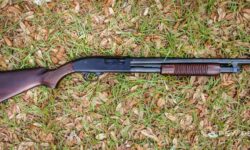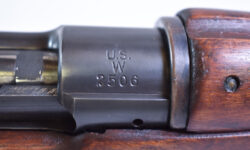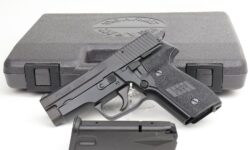WHAT IS THE DIFFERENCE BETWEEN CENTERFIRE AND RIMFIRE?
When I first went to the gun range, I had no idea that there were various types of ammunition for various types of weapons. At the time, all I knew was that you could put these small metal objects in a gun and you can fire away already. However, there is much more to it than that.
Having said that, it is important to become familiar with the various types of ammunition. Below are what you need to know about centerfire and rimfire ammunition.
How Does a Gun Work?
Before we discuss the distinction between the two, it’s necessary to review the fundamental mechanics of how a gun works. If you’re unfamiliar with how a gun works, when you pull the trigger, the firing pin inside the gun collides with the primer, causing a mini-explosion that ignites the gunpowder and propels the bullet forward out of the gun.
Why is this necessary to know? The distinction between centerfire and rimfire ammunition takes this sequence of events into account, and it is critical to keep in mind as we go further.
The Difference Between Centerfire and Rimfire Ammo
Now, you’ll encounter two types of ammunition: centerfire and rimfire.
Centerfire
Centerfire ammunition is most frequently used in rifles, handguns, and shotguns. The primer is located in the center of the casing base in this type of ammunition. This is typically desirable because it results in a larger explosion, which makes it easier to shoot larger bullets from the casing with significantly greater accuracy.
Pros
- Reloadable
- Significantly more dependable
- Used in the majority of modern firearms
- Due to the primer’s location, the velocity is increased
Cons
- When purchased new, it is more expensive
- Not available on certain older firearm models
Rimfire
The primer is located on the rim of the shell casing in rimfire ammunition. Some people prefer this type of ammunition because it does not produce as much recoil as centerfire ammunition. This may be a better option for those who have a tendency to flinch in anticipation.
By inspecting the bottom of the casing, you can easily tell the difference between centerfire and rimfire ammunition. Centerfire will have a small circle in the center indicating the primer location (as per the name). In comparison, rimfire ammunition will lack this circle.
Pros
- Initial investment is less
- Much more suitable for target practice or small game
- Fits a wide variety of older or antique firearms
- There is less recoil
Cons
- Not reloadable
- Significantly more prone to firing issues
The Calibers of Centerfire and Rimfire
Both centerfire and rimfire ammunition are available in a wide variety of calibers to accommodate a variety of firearms.
Rimfire ammunition is available in a variety of calibers, but the most popular are .22 Long Rifle and .22 Short.
There are numerous calibers of centerfire ammunition available today. The majority of modern shotgun shells are centerfire, as is nearly all ammunition in the following calibers:
- .38
- .357
- .45
- .44
- .223
- .308
- .270
Which Ammunition Can Be Reloaded?
Centerfire ammunition is the only type that can be reloaded. Rimfire ammunition generates an excessive amount of explosive reaction during firing, which can damage the external case and render it less reliable. As a result, it is not reloadable.
Due to the location of the primer in centerfire ammunition, it is frequently reloadable and reusable. This is advantageous for avid hunters or those who frequently go to the gun range. While centerfire ammunition is more expensive than rimfire ammunition, reloaded ammunition is frequently less expensive than new rounds, allowing you to get more for your buck.
Are They Interchangeable?
While each type of ammunition has a distinct purpose, rimfire and centerfire ammunition are not interchangeable. Indeed, incorporating one type into a weapon that was not designed to handle it is a surefire way to create complications.
Aside from that, ensure that you read the manual for your gun to determine the type of ammunition it accepts. If the manual is unavailable, as is the case with older firearms, conduct some online research. Since the majority of centerfire weapons were manufactured within the last century, if yours is older than that, it is possible that it is rimfire.
Which Types of Ammo Are Better?
Ultimately, the choice between rimfire and centerfire ammunition is a matter of personal preference and the type of firearm you own.
However, if you’re in the market for a new firearm and are deciding between the two, centerfire is typically the preferred option. Not only does it withstand more abuse, such as that encountered during hunting or military operations, but it is also less prone to manufacturer defects.
The Takeaway
While the choice of ammunition is ultimately up to you, the list of advantages and disadvantages provided in this article should help you distinguish between the two types and make an informed choice for yourself. [sc name=”faq2questions” q1=”The Difference Between Centerfire and Rimfire Ammo?” a1=”Centerfire ammunition is most frequently used in rifles, handguns, and shotguns. The primer is …” q2=”Which Ammunition Can Be Reloaded?” a2=”Centerfire ammunition is the only type that can be reloaded. Rimfire ammunition generates…” ]


